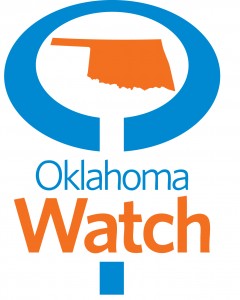By Chase Cook
Oklahoma Watch
Among thousands of Oklahoma students who could be held back in third grade for failing a state reading test next year, a disproportionate share will likely be low-income children, an Oklahoma Watch analysis of state data found. Most could be boys.
An analysis of state test data from spring 2012 found that elementary schools with higher rates of low-income students had greater shares of third graders who scored poorly on the Oklahoma Core Curriculum Test for reading.
Starting in spring 2014, under the Reading Sufficiency Act, third graders who score at the lowest level on the test, unsatisfactory, will have to repeat third grade unless they get an exemption or improve to grade level by the fall.
The possibility that many of the students held back will come from low-income families raises fears among some educators that these children in particular will suffer negative effects from retention. Research over decades has found that retention can cause harmful lasting effects, including lagging achievement, higher dropout rates and social and emotional problems. Poor students are less likely to have support resources at home to recover, some experts say.
The Reading Sufficiency Act is intended to help more children read earlier, to advance from “learning to read” to “reading to learn” by fourth grade.
Supporters say the retention mandate will push schools to get their low performers up to speed and stop social promotion, in which students are moved up without mastering skills.
Statewide, 5,375 third graders, or 11 percent, scored last spring at the lowest level on the reading exam, according to state data. In the largest district, Oklahoma City Public Schools, 22 percent scored at the bottom; in Tulsa Public Schools, 25 percent did. More than four-fifths of students in both districts are low-income.
Tulsa-area principal Angie Teas is especially worried. Nearly 40 percent of her third grade students would have flunked last year if Oklahoma’s read-or-fail law had been in effect.
The principal of Mark Twain Elementary School in Tulsa can count on one hand the number of third graders retained during her seven-year career as a principal.
Last spring, 25 of her third-graders scored unsatisfactory on the statewide reading test.
Like many schools, Mark Twain has stepped up efforts to get its struggling students to read better before the law’s ultimatum kicks in. But Teas remains concerned. About 15 percent of this year’s second graders are at risk of failing in 2014. Nearly all of Mark Twain’s students are from low-income families, which could magnify any negative effects from retention, she said.
“We have students with parents in jail, students who are in the shelter down the street … (To those children,) who cares about reading and math if those things are going on?” Teas said.
Educators agree that Oklahoma students need to improve on reading. That’s reflected in results on the “Nation’s Report Card,” or National Assessment of Educational Progress, which are tests give to a sampling of usually fourth- and eighth-grade students nationally.
Since 2002, the state’s fourth graders have consistently scored lower than the national average on NAEP reading tests.
Low-income students performed worse. In 2011, 45 percent of low-income students in Oklahoma scored below the basic level on NAEP reading, compared with 36 percent of all students. Similar gaps existed between Whites and minorities. Nearly 40 percent of the state’s fourth-grade boys, and 30 percent of girls, scored below basic.
A pivotal factor in helping all students, experts say, is providing enough intervention so they can rebound academically and, in the best case, quickly return to their normal grade level. At the school level, that comes down to money, and…
Finish reading Many Low-Income Oklahoma Students May Fail Because of Reading Law



